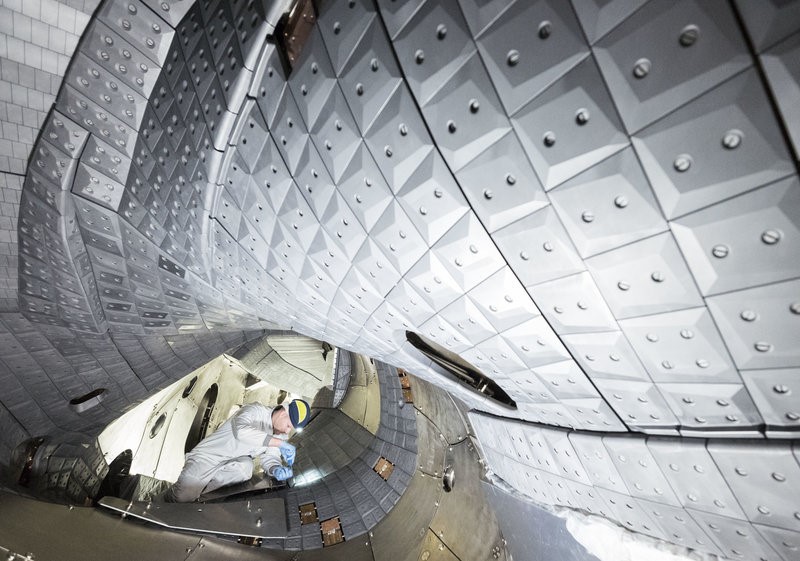The new experimental campaign on the stellarator has started
The current experimental cycle has been launched on the world’s largest stellarator. During the next four month Wendelstein 7-X will produce longer and higher energy plasma discharges then before, thanks to the numerous upgrades and the experiences from the last two years. Contrary to the 30s long plasma discharges archived during the last campaign, now they expecting 100s long plasmas. A plasma video compilation can be seen below from the previous campaign produced by the video diagnostics system of W7-X. The system was built by the Pellet and Videodiagnostics group of the Wigner Research Centre for Physics.
W7-X plasma video2
Colleagues from Wigner RCP in Nature Physics
At the end of May an article was published in Nature Physics where they summarized the experiences from the last campaign. On this article two Hungarian colleagues, Dr. Tamás Szepesi and Dr. Gábor Kocsis members of the Pellet and Videodiagnostics Group at the Wigner Research Centre for Physics were listed as an author. This paper tells that W7-X archived world record in plasma confinement among stellarators and had higher temperatures and longer discharges then before. To confirm these they used the Hungarian team’s video diagnostics as well. The original press release can be found here.

W7-X interior
The Hungarian background
The operation of the Wendelstein 7-X experiment is 20% funded by the European Union's fusion research program, EUROfusion. In this context, participation in experiments and the construction of sub-assemblies should be applied. The Department of Plasma Physics at the Wigner Research Centre for Physics, in collaboration with the Institute of Nuclear Techniques at Budapest University of Technology and Economics (BME), now has two own built diagnostics for the experiment. The importance of Hungarian equipment is demonstrated by the fact that the Hungarians received the most time to participate in the experiments after the German institutes far ahead of all other EU member states.
One of the Hungarian diagnostics is the video camera system. This year, the Pellet and Video Diagnostics group expanded the repertoire with one more ultra-fast camera, so a total of 11 cameras are watching the processes inside the stellarator. 8 of these are EDICAM cameras and 3 Photron ultra-fast cameras. In 2017 the Beam Emission Spectroscopy Group built an another diagnostics, the alkali beam diagnostics, which measures the density and its rapid changes at the edge of the plasma. Even a couple of days of operation in 2017 has been successful, now additional detectors have been added to the system to explore further measurement options.
W7-X alkali beam video
The Beam Emission Spectroscopy Group installed a new observation system and its associated optics for this experimental period, allowing even more accurate observation. More on the alkali beam diagnostics can be found here.
https://wigner.mta.hu/hu/plazmafizikai-osztaly



